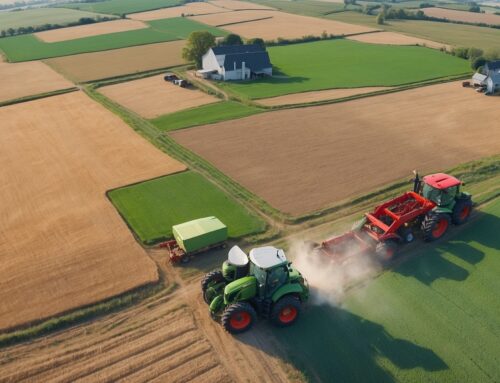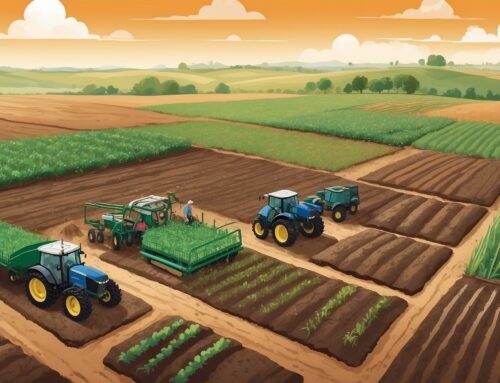Howdy, fellow tillers of the earth! Ever looked at one of those shiny soil moisture sensors and thought, “Where the heck did this come from, and why’s it sticking its nose in my dirt?” Well, let’s take a stroll down the path that led us from poking our fingers into the soil to jamming electronic probes into it, all for the sake of growing the best darn crops we can.
Grab a cup of coffee (or, let’s be honest, your third one of the morning), and let’s dive into the fascinating story of how soil moisture sensors went from quirky gadgets to vital farm tools.
The Humble Beginnings: A Finger in the Dirt
It all started with a simpler time—when the only “sensor” we had was our finger, poked an inch or so into the dirt. If it was damp, great! If not, it was time to fire up the irrigation and hope the well didn’t run dry. But let’s face it—fingers are notoriously bad at measuring percentages, and our judgment could be, well, influenced by the day’s temperature or whether we were just plain tired.
So, someone somewhere decided that there had to be a better way. A more precise way. A way that didn’t involve guessing or arguing with your neighbor about whose field looked drier. Enter: soil moisture sensors.
The Early Days: More Science Experiment than Farm Tool
Back in the day, the first soil moisture sensors were pretty much science projects. Picture a couple of wires and some sort of mysterious box that had more knobs than instructions. It was something only a lab tech might love—not exactly fit for a farmer who’s already busy fixing a busted tractor, feeding a hundred head of cattle, and managing fieldwork.
But as technology advanced (and as the folks building these sensors figured out that farmers don’t want to spend three hours figuring out how to calibrate a blinking light), soil moisture sensors began to get more practical. They started looking less like a tangle of wires and more like something that might belong in a field rather than a mad scientist’s garage.
Finding a Home on the Farm: The First Practical Sensors
Fast forward a few years, and we finally got some sensors that made sense. You could stick them in the ground, they’d tell you if it was wet or dry, and you didn’t need a Ph.D. to understand what they were saying. Suddenly, we had a reliable sidekick—a piece of tech that did what our finger could do, but better. It gave us numbers, it gave us confidence, and most importantly, it let us know just how much water was needed—not too much, not too little.
The first practical soil moisture sensors were still pretty basic, but they got the job done. It was like trading in your old pickup with no power steering for one that actually had an A/C that worked—not fancy, but a real game changer.
From Gadgets to Full-Fledged Farm Tools
Eventually, soil moisture sensors started getting smarter. They started connecting to data loggers. Then they got wireless. Then they started talking to our phones. Pretty soon, you could get a notification while you were at the diner having a burger that said, “Hey, the east field’s getting a bit dry. Might want to turn on the drip line.”
That’s when soil moisture sensors went from being just another gadget to becoming an essential part of precision agriculture. They were now tools that worked seamlessly with irrigation systems, helping us use every drop of water as efficiently as possible—especially important when water is more valuable than gold in some places.
And it’s not just about saving water—it’s about yield. Better water management means better plant health, fewer diseases, and ultimately, more bushels per acre. These sensors became the quiet workhorses of modern farming, gathering information from the soil and helping us make decisions that are as informed as they are intuitive.
Today’s Soil Moisture Sensors: The Future is Now
These days, soil moisture sensors are smarter than ever. They’re integrated with IoT systems, feeding data into the cloud, syncing with smart irrigation systems, and giving us insights that our grandfathers could only dream about. They’ve got AI-driven recommendations, which might sound fancy, but it really just means we have a digital helper telling us, “Now’s a good time to water.”
And the best part? They’re actually farmer-friendly now. No more needing to decipher strange codes or read a 50-page manual. Just pop them in the ground, connect them to your dashboard, and let them get to work. You spend less time stressing about whether that field is too dry, and more time actually focusing on what you do best—farming.
The Road Ahead: Where Are We Going Next?
Looking to the future, who knows where these soil moisture sensors are heading? Maybe they’ll start chatting with us directly: “Morning, Farmer Joe! Soil’s looking a bit parched today, might wanna get ahead of that before the afternoon sun hits.” Maybe they’ll start integrating with drones that fly over and double-check the readings from above. Maybe they’ll even help predict disease risks based on soil moisture trends.
What we do know is this: we’re not going back to the days of sticking our fingers in the dirt and hoping for the best. The journey of soil moisture sensors has been one of constant improvement—taking a task we’ve always done and giving us the tools to do it better, with more precision, and less wasted effort.
So here’s to the journey—from a finger in the dirt to sensors that are smarter than a border collie rounding up sheep. It’s been a wild ride, and we’re just getting started.
Keep those fields growing, and as always, happy farming!





